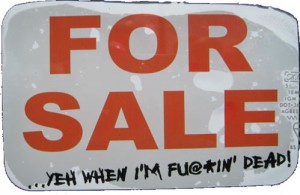As I suggested in Part 1 of this series, the boat sales process is really just one corner of a triangle. The other two corners are the manufacturer and boat repairs. Where they really show their interdependency is when one part is not working well with another part… the whole triangle breaks down.
The Manufacturer
The boat manufacturer is important, but not for the reasons you might think. What makes one different from another? Why do boat dealers switch brands? Same answers: customer service and responsiveness to repair claims.
In Secrets of Marina Boatyard Operations, I mention an interesting statistic. For many dealers, 50 to 60 percent of all repairs are warranty work. What dealers want is a manufacturer that is responsive to warranty claims. They don’t want to haggle – they want to get it done. Can’t blame them – repairs typically cost in the tens of thousands of dollars, so from a cash flow viewpoint every warranty claim is a big deal. Delays, haggles or other hiccups in getting repairs done gives leverage for the dealer to look elsewhere for a supplier.
The other important aspect of this relationship is the warranty reimbursement. Some manufacturers have policies of reimbursing on a flat fee basis for a repair. It’s a lot like insurance companies – they don’t pay the doctor per hour, they pay per job and use statistical averages and ranges to determine how much they will pay for that service. Ask the physicians if this limits their income and forces them to make changes in their practice just to stay in business. Same goes for many boat dealers. Too frequently they have to do some type of custom repair because some part is just too damaged or takes up too much time to fix for whatever reason. If their labor hours run greater than the range anticipated from the manufacturer, the dealer just eats it. Too much bad food and everything tastes sour. This is another reason dealers switch brands.
Used Boat Sales
 Just like automobile dealers all have used sales departments, boat dealers need that too. Yes, they take trades. Yes, they provide more diversification when new boat sales go cold. But what I really find interesting are the creative ways that a used boat sales operation makes money for the entire marina.
Just like automobile dealers all have used sales departments, boat dealers need that too. Yes, they take trades. Yes, they provide more diversification when new boat sales go cold. But what I really find interesting are the creative ways that a used boat sales operation makes money for the entire marina.
Used boats help marina wet slip occupancy immensely. Can’t lease that slip? Fill it with a used boat – the entire marina will be full when non-sales marinas are showing vacancies. Ah, but it doesn’t end there. If that boat is not owned by the dealer, they’re taking the boat in on consignment. That means that after 30 days, if the sales staff has not sold the boat, the owner pays a daily transient fee for the slip! As you might guess, that’s why boat sales marinas in today’s recessionary economy show higher occupancy with more income per slip than non-boat sales marinas assuming that they take boats in on consignment.
Not to be outdone, let’s look at the profitability relationship between the boat slip and used boat sales. Let’s say you have a wet slip that rents for $24,000 annually. Given the profit on consignment, how many times does the slip need to turn in a year to pay for the opportunity cost of the lost wet slip rental? From a gross profit perspective, that number is generally around one. Of course figure in a daily transient fee and you won’t even need a “used boat turn ratio” of one. Turn it twice and you’ve made a tidy profit. Kudos to smart marina boat dealers. This is one reason why I feel sorry for the highway-only boat dealer – they don’t benefit from daily transient fees or having a slip available for the person who buys the used boat (unless, of course, they also own a marina).
Let’s Take It to the Next Level
Part 3 of this series will discuss ways dealers change their business operations in the face of a recession and the keys for surviving. Stay tuned.

